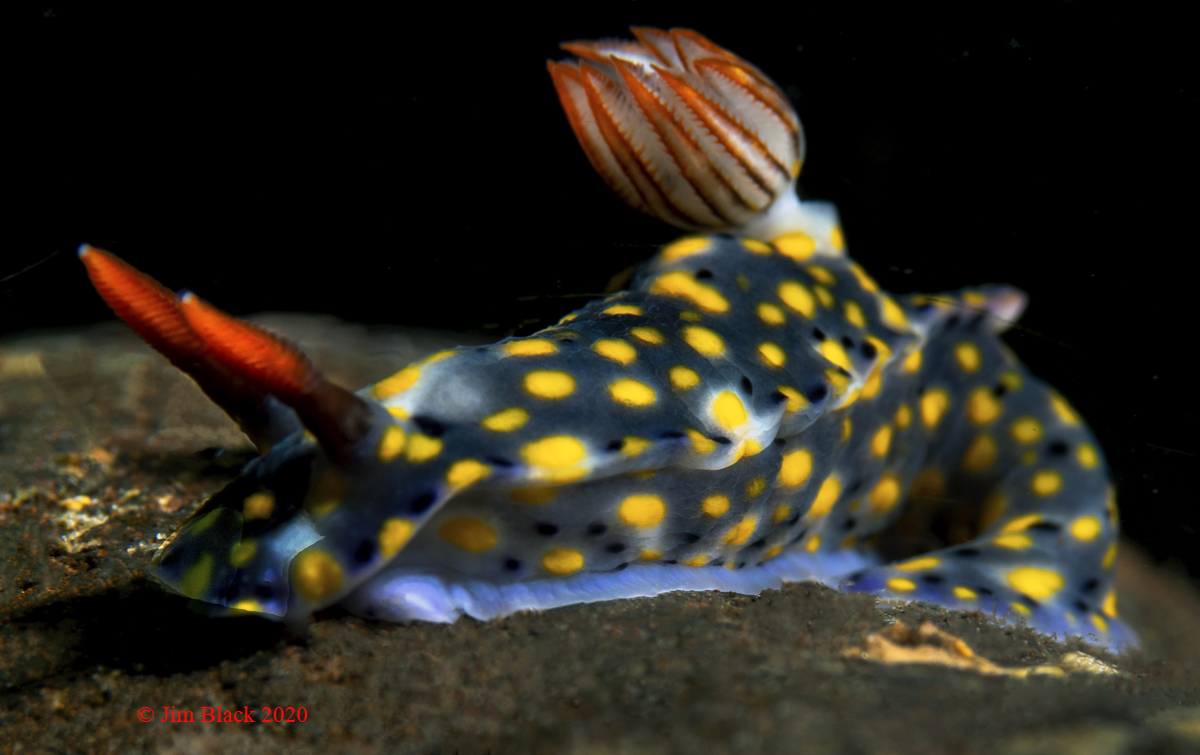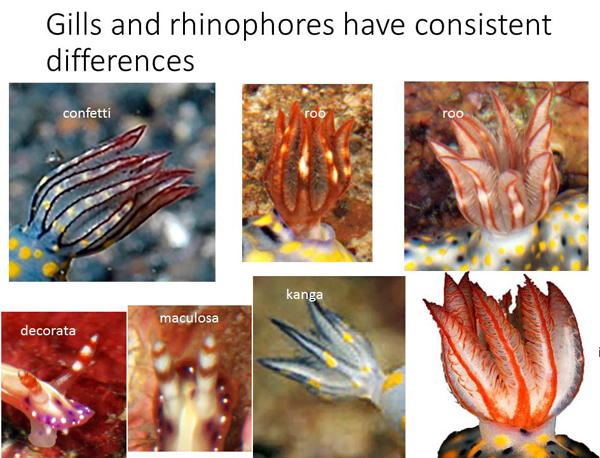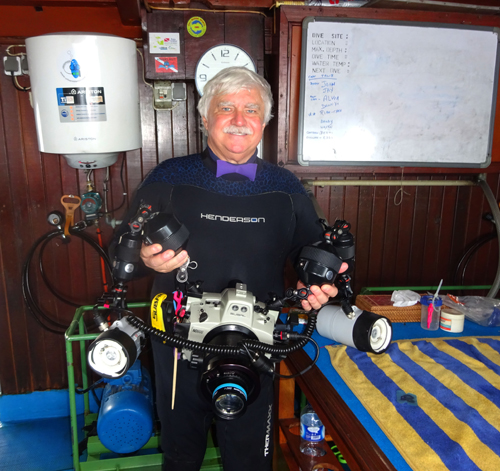 |
Hypselodoris confetti
Image courtesy of Jim BlackVilla Markisa Dive resort , Tulumben, Bali, Indonesia
Jan. 2020
 |
Hypselodoris confetti Gosliner & R. Johnson in Epstein et al., 2018 I was a little confused about the ID of this critter, originally thinking it was Hypselodoris roo Gosliner & R. Johnson in Epstein et al., 2018 (page 190 in NSSI 2nd Ed.), so I asked for help from the senior author of the species, Dr. Terry Gosliner. Well was I surprised when Terry wrote back indicating that Jim's critter is actually a similar species named in the same paper - Hypselodoris confetti. So what the difference? Apparently Jim's photo is of specimen that is much darker than the photo in NSSI. Both have numerous yellow and black spots, but the key external characteristic are the coloration of the gill and rhinophores. Note the gill and rhinophores of H. roo are uniform red, with a yellow spot midway, while those of H. confetti have blue-black at the base and red tips. The authors also point out that this species is similar to Hypselodoris kanga and H. roo (get it - "kangaroo" - these guys have a real sense of humor) but with yellow, purple and black spots rather than purple lines on the notum; also like H. kanga has blue rather than red on the gill. All are fairly large species measuring 45-50 mm in length and occur together in the Western Pacific. I think I would have named with species "confusa" rather than "confetti." Reference:
Epstein, Hannah & Hallas, Joshua & Johnson, Rebecca & Lopez, Alessandra & Gosliner, Terrence. (2018). Reading between the lines: revealing cryptic species diversity and colour patterns in Hypselodoris nudibranchs (Mollusca: Heterobranchia: Chromodorididae). Zoological Journal of the Linnean Society. 10.1093/zoolinnean/zly048. |
Sammamish, WA 98074
Apr., 2020
Send Dave email at davidwbehrens@gmail.com
Jim on location at Raja Ampat, 2017
 |
Jim Black Retired from US Airways, and now after a merger, American Airlines with 37 years service as a pilot. Jim retired as Captain flying an A330 Airbus Internationally. Diving since 1970, with close to 8000 dives now. Currently shooting a NIkon D800E in a Subal Housing with Ikelite strobes.. Jim uses a Macro Mate, and a Nauticam SMC and its Multiplier for super macro work. Jim's photography has been featured in a number of books and publications including Helmut Debelius' Nudibranchs and Sea Snails of Gosliner, Behrens and Williams Coral Reef Animals of the Indo-Pacific. A photo of Jim petting a shark in "Sleeping Shark Caves" off Isla Mujeres Island, Mexico, taken by Amy Foster his significant other, recently appeared in Dave Behrens' Diving Guide to Cozumel, Cancun & The Riviera Maja. Jim has also been a major contributor to (1) the New Indo-Pacific Nudibranch and Sea Slug Identification book by Gosliner, Valdez, Behrens (NSSI),(2) Tropical Pacific Reef Creature Identification by Humann & DeLoach,(3) Nudibranchs Encyclopedia by Neville Coleman,(4) Reef Fishes of the East Indies by Gerald Allen and Mark Erdmann, And many other publications. Jim has been a solid supporter of the Slug Site since day one. His countless contributions put him near the top of the list of photographers who have greatly expanded our knowledge of sea slugs. There are a lot of kids in the formative stage of their education who are getting their first introduction to our sea slug friends via the great photographs Jim and other contributors have made to the site. My hat is off to Jim for making this presentation possible!
Send Jim email at jim.black14@verizon.net
|

Attention all you Sluggers, and you know who you are! The NSSI 2nd edition is available in ebook PDF and book form . The hard back version will become available Nov. 1st. Both will cost $65 (individually). You will need to jump through a few hoops to get the electronic version as pdf distribution is protected by Adobe ID!! Please read the following to enable reading your electronic purchase! This new 2nd Edition is updated and reorganized, including 185 new species. Among other features, the new edition includes additional photographs of species, an identification key, and an up-to-date classification reflecting the latest evolutionary relationships. The Indo-Pacific represents the largest expanse of tropical ocean in the world, stretching from the Indian Ocean coast of southern Africa and the Red Sea to the central Pacific of the Hawaiian Islands, Easter Island and the Marquesas. This region supports the most diverse marine fauna of any place in the world for most groups of marine organisms. The nudibranchs and sea slugs are no exception to this rule; there are about 3,000 described species of these organisms in the world and at least 40% of these have been found exclusively in the Indo-Pacific tropics. This book illustrates 2,138 Indo-Pacific nudibranchs and sea slugs, including many undescribed species.
|

|
